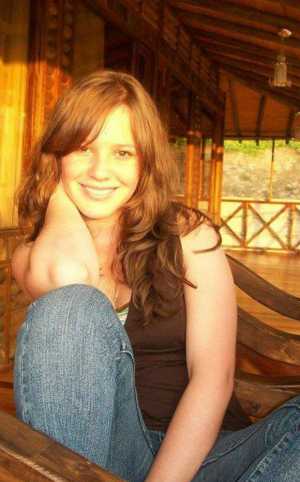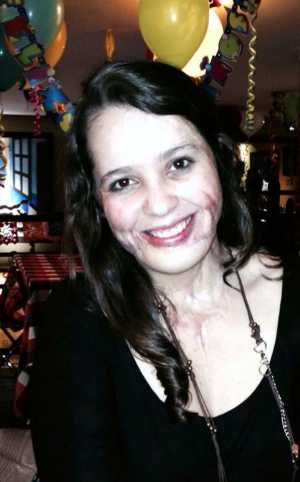I am a Colombian woman and after the recent acid attacks that took place in Colombia, my heart shrank. I felt impotent and despair drowned me. My first reaction was indignation and rejection. Afterward, I began researching about this and it took me by surprise to find out that in Colombia, the situation regarding burn victims is not only sad but heartbreaking.
The burns
First of all, it is very important to grasp the subject at hand. A burn is an intense, deep, and extremely hurtful injury.

Three are thermal burns that are caused due to contact with flames, gunpowder, stoves, and lighters, among others.
There are also acid or chemical attacks. The victims are scarred for the rest of their lives. Their bodies heal but in the long run, the psychological damage is profound.
There are different types of burns, some are worse than others.
First-degree burns are limited to the outer layer of the skin epidermis. The skin is red but there are no blisters and the healing time is from 5 to 10 days.
Second-degree burns are divided into two categories. The “superficial” involve the first layer and second layer of the skin. The “deep” takes place in the middle layer and the sweat glands or oil-producing glands.

Although the first two types of burns are delicate, the most acute danger starts from third-degree burns.
A third-degree burn penetrates the entire thickness of the skin; including nerve endings, blood vessels, etc.
They are really sensitive. Theoretically speaking, given that the victim loses sensibility it does not hurt when they are touched.
Having this said, as always, it depends on the depth of the wounds. The outermost layer of the skin is destroyed (epidermis). The skin changes color, it turns white, brown, red, or black. It also acquires a rough texture.
The INTI Foundation
Being a burn victim has to be one of the most horrible experiences in the world. There are people who are burned during home accidents in their workspaces, celebrations and others who are burned by acid. Either way, the skin, muscles, mind, and soul are scarred. My longing, a humble one, is to help to some extent that people know a little more in-depth about the realities of the people burned.
The EPS says many plastic surgeries are vanity issues and then if the person suffered a burn and their lipsticks to the nose they say it is aesthetic. They are already very affected by what happened to them, they are hurt in the depths of his being, this drama is scary and the fact that you have a fight with the EPS for them to pay for the surgery, for them to pay a mask so that they give you the tights… it is very painful … as a foundation, we want to go help them during the entire process.
Nowadays, when people research this subject in Colombia, there are several names that stand out; one of them is Adriana Liévano. She is the president of the INTI FOUNDATION.
Inti Foundation was created with the sole purpose of helping burn victims with their physical and psychological recovery and treatments. The idea of comprehensive support in any of the needs that the victim may encounter is the most important aspect of the foundation.
In Colombia when a person gets burned, for any reason, the EPS (State Health Service) takes care of them during the acute phase. However, once the clinic discharges the patient, and he or she is out of critical danger, there is a need for several paperwork and documentation to take place, and at this moment all the problems begin. The main problem is that the treatments are not paid for because many treatments are very expensive.

L.V.A: Why did you create this foundation?
Liévano: We started working on this foundation about a year ago. The idea was already in the air but we began to act on it about one year ago. The founders are 3 women, myself included, who somehow have been exposed to the burning issue … one them is Jennifer Gaona, she is a plastic surgeon specializing in burns, Maria Luisa Flores, and I who have suffered burns in a large percentage of our body.
L.V.A: So…
Liévano: So… I am the president, Jennifer is the scientific director and María Luisa is in charge of PR.
Suddenly it sounds odd and even cheesy but as I was talking to Adriana I realized that everything you do for burn patients, all you do for them will help them improve and any little thing that you do in terms of surgery will be of significance.
L.V.A: How did you three meet?
Liévano: After Maria Luisa had her accident Jennifer saw her. Jennifer is the doctor that operated on her and helped her with all treatments. Maria Luisa and I knew each other since before the accident when her accident took place we spoke. With time we came together.
Who pays?
The issue of health coverage in Colombia is delicate, to say the least. In short, if a person has the economic resources to pay eventualities there will be no problem, but if you don’t have enough money, then the necessary treatments are not available.
That’s where the problem begins, to look if you can find something here and something else in another place, will the insurance pay for it, etc. That begins to postpone and to delay the healing process. Burns have a very slow evolution … everything you do is going to be noticeable.. but if you actually look at my neck today you cannot imagine what it was 23 years ago.
Having this stated, the subject of the burn victims is a serious one. All that is related to the acute stage is covered by the EPS without any problems.
Doctor training and preparation in Colombia are really good. The manner in which patients are being taken care of is high because it is done using the same international protocols all around the world.
Although issues of cost regarding medical supplies are extremely complicated because the medical supplies needed are expensive and the EPS does not allow it.
The solutions
Having stated all of the problems and issues surrounding the medical coverage the burned victims encounter, it has to be noted that several things have changed for the better.

Nevertheless, many changes need to take place in regards to the comprehensive care of victims. This is the reason why bill 016 from 2014 is in congress at the moment. This bill has the only purpose of harshening the punishment of those who attack people with acids or other chemical substances.
The INTI FOUNDATION was created to generate a comprehensive and holistic support system for the rehabilitation and reconstruction of the lives of those who have been exposed to burns of any etiology.
L.V.A: What do the victims in other parts of the country do?
Liévano: Most end up in Bogotá. They have to be in Bogotá in order to get their treatments; all the technology, knowledge, and doctors are here. It is not the same thing to have a plastic surgeon or to have a plastic surgeon with knowledge of burns…
L.V.A: What is missing at the moment? What do patients need?
Liévano: A Doppler Laser. It allows us to measure the depth of the scar. Bandages make the scaring process much better. We also need skin that is made in a laboratory, basically, they are sheets of skin and that is very good and innovative because it means that they don’t have to take skin from some other part of your body.
Acid burns
When I started to learn about this topic, every day I read something about acid burns. This was a scenario that I had only imagined in a horror movie. To my surprise, this is a living nightmare for people worldwide.

People who are burned by acids are very lonely, not only are they physically affected but their emotional part is finished, in rags. Many of these attacks occur to people with a low income; however, this is not always the case. After they are attacked many are homeless, jobless, some are indigent. The idea is to help them regain their place in the working environment and in life itself.
According to the Legal Medicine office in Colombia, during a decade, between 2004 and 2014, 926 acid attacks were reported.
In simpler terms, this means an average of 115 attacks per year. It is important to note that from the reported cases, 565 of the victims ( 61% ) were women. Also, 361 men were victims of such attacks.
When you go through such a strong burn like Maria Luisa and I had, a person transcends to another level in a dimension that I cannot explain it … it’s something very strange, you begin to see the world through a different perspective and that makes you one wants to help other people,” says Adriana.
Continuing with the number of cases in Colombia, it is important to understand the following.
A from 2004 to 2014, speaking generally of 980 cases of unspecified attacks.
This means that the attacks were carried out with different chemical agents.
Acid attacks are a form of violent assault. The objective is to throw acid or a corrosive substance onto the body of another with the intent to disfigure, main, torture, or kill.
For that reason, one of the most notable effects of this type of attack is lifelong bodily disfigurement. The Acid Survivors Foundation in Pakistan, assures that many victims survive meaning they are faced with physical and psychological challenges.
Like the Phoenix Bird
Suffering from burns in the body is one of the most horrible nightmares that may exist. I knew this already, but after having the opportunity to speak with Adriana Liévano and understanding in depth the trauma and the number of problems for these people, my perspective augmented.

Helping men, women, and children in these situations is necessary and a moral obligation. Such aid should take place around the world. In this case, in Colombia, we need to join forces in order to upkeep and assist initiatives such as the INTI FOUNDATION. The INTI FOUNDATION is a space for those people who like the Phoenix, the fabulous bird that was consumed by fire and reborn again, are rising from the ashes.


